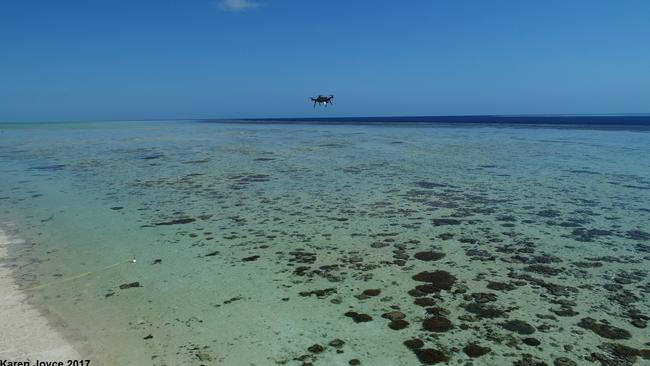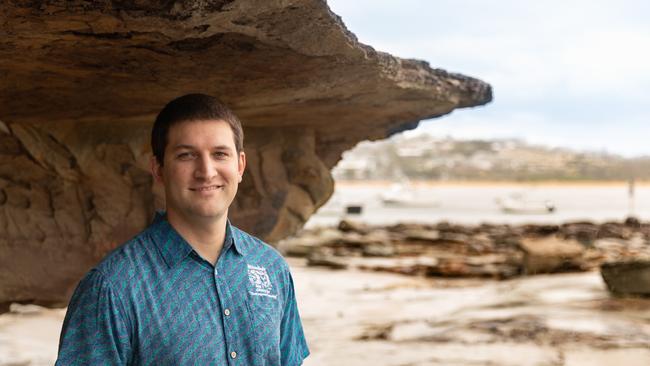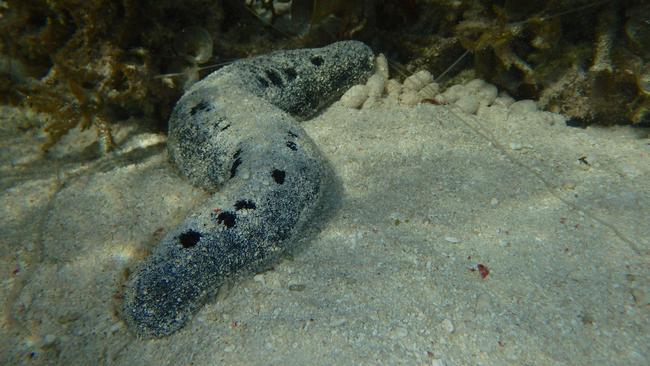Drones used in CQ to measure key species in reef survival
Drones are being used to measure the volume of poo excreted by a creature that plays a key role in reef ecosystems.

Gladstone
Don't miss out on the headlines from Gladstone. Followed categories will be added to My News.
The essential role Sea Cucumbers play in shaping and keeping the Great Barrier Reef healthy is now being tracked by drones capturing massive volumes of the creature’s poo.
A delicacy in many Asian countries, the Sea Cucumber (holothurians) filters and cleans the reef, depositing huge amounts of waste yearly, equivalent to five times the weight of the Eiffel Tower.
Their high value in Asian markets has led to mass overfishing globally, resulting in seven species endangered and nine in a vulnerable category.
Scientists from the University of Newcastle, Macquarie University and James Cook University have discovered a new way to measure the volume of Sea Cucumber poo.

The faeces is captured in images by drones and satellites on the Heron Island reef, highlighting the need to protect this valuable part of the reef ecosystem.
“Our research found that each year sea cucumbers can poop over 60,000 tonnes of sediment across a coral reef, approximately the mass of five Eiffel towers,” University of Newcastle Marine Scientist and co-author of a new study, Dr Vincent Raoult said.
“It is likely that most of the sediment found on coral reefs has been through a sea cucumber many times, and therefore the disappearance of these creatures would have negative flow-on effects to reef ecosystems.”
Closely related to sea urchins and sea stars, Sea Cucumbers digest sediment and microorganisms, excreting ‘clean’ sediment similar to what earthworms do.
The process called bioturbation plays a key role in the survival of reefs by aerating the sea floor, providing ‘fresh’ sediment, and releasing calcium carbonate into the water as a by-product to help support coral growth.
“There is great concern among scientists that the important ecological function of sea cucumbers will be lost,” lead researcher Associate Professor Jane Williamson from Macquarie University said.
“Until now though we did not know just how large this effect could be on a reef, because counting sea cucumbers on a such a vast scale is difficult.”

Researchers have used drones to map 30,000 square metres of reef surrounding Heron Island at very high resolution to identify Sea Cucumbers.
“Using satellite data, we then extrapolated these patterns to the entire reef to have an approximate total number of sea cucumbers present,” Associate Professor Williamson said.
“In parallel, we ran experiments in aquarium facilities to determine how much sediment was passed by individual sea cucumbers on a daily basis.”
Due to global overfishing, Dr Raoult said the species can take decades to recover.
“If we want to have healthier reefs, we can’t just ignore the fact that sea cucumbers are disappearing and focus solely on climate change, even though that is the major threat to coral reefs, we have to make sure that we address other issues such as overfishing as well,” he said.
“It’s very hard though for scientists to have a sense of what the loss of a species might be if we don’t know the scale of their role in the ecosystem.”
Other stories
Drug-making meds stolen in Gladstone chemist smash-and-grab
REVEALED: Top 10 hooning hot spots in Gladstone
Turkey Beach man’s explanation for blood on his hands


